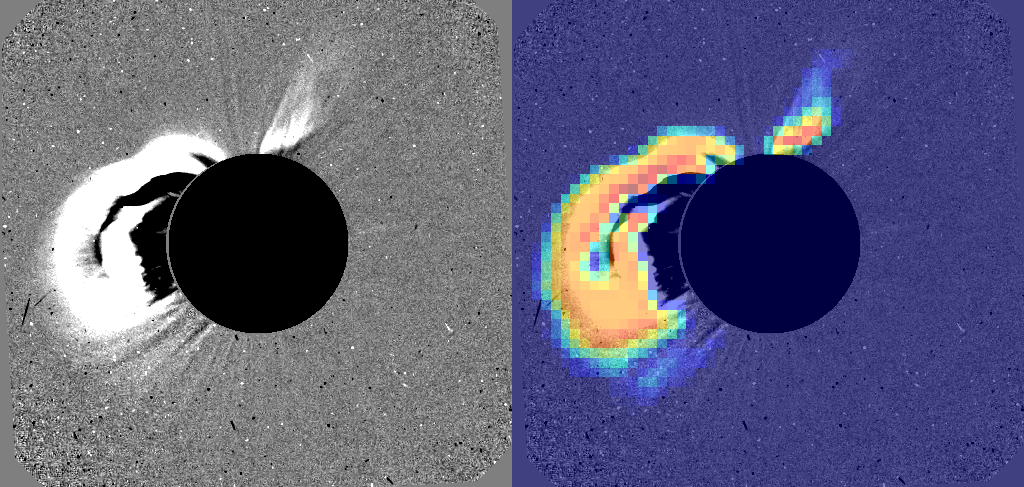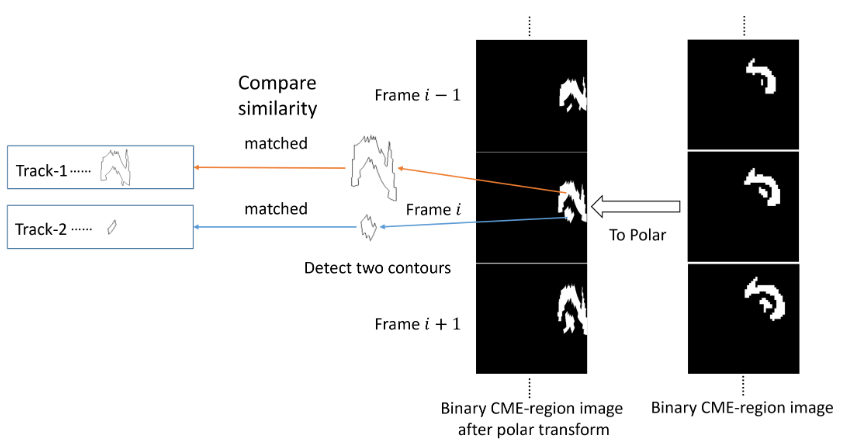Research developed a new algorithm for deriving CME kinematic parameters
According to the data from the LASCO coronagraph on the SOHO observatory, the researchers from the NASA CDAW data center manually create a CME catalog since 1996. This catalog, recording the time, positional angle, angular width and velocity, provides a basic data for other researches regarding CME. However, the manual recognition is time-consuming and labor-intensive. Researchers are developing automatic algorithms for recognition of CME.
Recently, the member of Shen Fang’s team from the State Key Laboratory of Space Weather, National Space Science Center, Chinese Academy of Sciences, developed a new algorithm to recognize CME and derive CME kinematic parameters based on machine learning. They trained a CNN model to classify whether a CME is included in the observation of LASCO coronagraph. And they leverage the information beneath the feature map of the neural network via a Principal Component Analysis method. Last, they track the CME in the field of view of coronagraph based on the morphological, positional and area characteristic of CME. Compared with classical method, the new algorithm based on machine learning is capable of identifying weak CME signals, producing accurate morphology information in a straightforward way. The result of this algorithm can be further used in the CME arrival time prediction, CME 3D reconstruction and other related works.
The contributors of this research include Ph.D student Lin Rongpei, vice-research professor Yang Yi, research professor Shen Fang, Dr.Gilbert Pi from Charles University of Czech and Ph.D student Li Yucong.
Article detail: Lin, Rongpei, Yang, Yi, Shen, Fang, Gilbert Pi, and Li, Yucong. 2024. “An Algorithm for the Determination of Coronal Mass Ejection Kinematic Parameters Based on Machine Learning.” The Astrophysical Journal Supplement Series 271 (2): 59. https://doi.org/10.3847/1538-4365/ad2dea.

Fig.1: The original image and the result of co-localization map, based on the observation of CME event on March 29th, 2011

Fig.2 The process of the track-match method.


